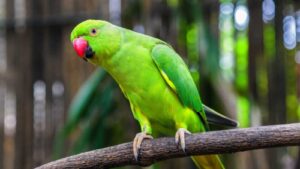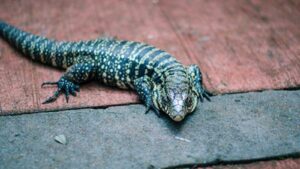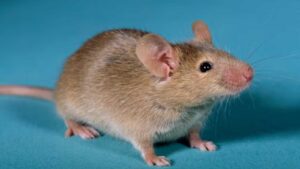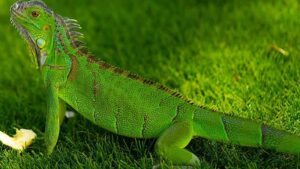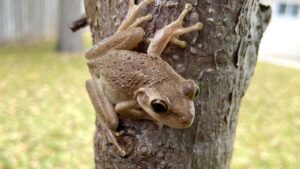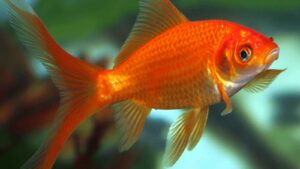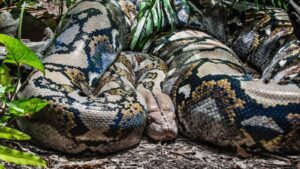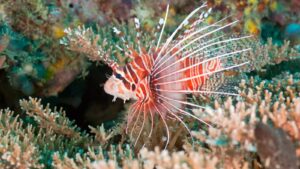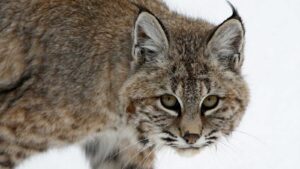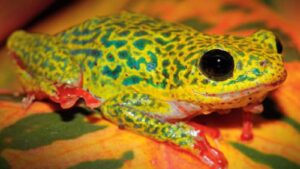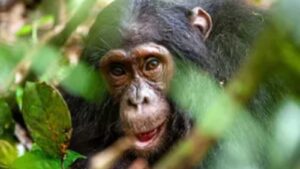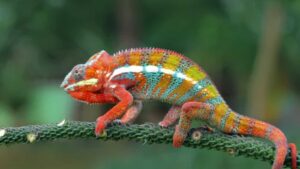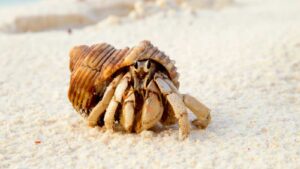Pets You Should Never Release in the Wild
Summary
Top 20 Pets You Should Never Release in the Wild. Dogs and cats have been bred for centuries to be our companions. However, more people around the world are instead choosing wired creatures as pets while knowing very little about […]
Top 20 Pets You Should Never Release in the Wild. Dogs and cats have been bred for centuries to be our companions. However, more people around the world are instead choosing wired creatures as pets while knowing very little about them. Sadly, exotic animal ownership often ends with abandonment when humans can’t care for the creatures anymore. In this video, we are going to share a list of the top 20 pets you should never release in the wild.
Video: Pets You Should Never Release in the Wild
Parrot
The chances of a parrot surviving in the wild are low. Domesticated parrots have no training and a lack of experience and knowledge in the practices required to survive in the wild. For those that might stand a chance, they’d need the right climate, conditions, and a lot of luck to survive.
Like any bird, if you’ve been keeping a parrot, it will likely never have had to fend for itself. It would never have had to hunt for its own food and would likely not even know where or when to hunt for its own food or even what that food might look like.
Video: Pets You Should Never Release in the Wild
Tegu Lizard
In the state of Massachusetts, tegus are widely sold, and citizens do not need a permit to own one. Tegus are skilled escape artists, so they often get lost.
People often purchase exotic pets without understanding what they’re getting themselves into. Tegus can live for upward of 20 years. Caring for a long-lived exotic pet is an expensive and, sometimes, risky endeavor since their behavior can be unpredictable and the fallout can be catastrophic. If this animal runs away and manages to survive as a result of predation, exposure, or starvation, it may find a mate, proliferate, and become an invasive species.
Mice
Mice can make wonderful pets for most people. They are clean, friendly, fun, and very active creatures who will give you hours of enjoyment and great company. They are also quite intelligent and, with lots of time and attention, can be taught how to do tricks and will develop strong personalities of their own. Pet rodents have been bred in captivity and for life in captivity. They do not possess the genetic traits necessary for survival. Fancy rats and mice are often white, and this makes them highly visible to predators. These animals should be taken to a rescue center.
Ferrets
Ferrets are very sociable animals and can make wonderful pets, especially if handled and socialized well from an early age. They are inquisitive and playful animals with characteristics similar to those of dogs as well as cats and can be easily trained. All these features make them wonderful pets. However, domesticated ferrets should never be confused with wild ferrets. They are different species, and pet ferrets are not equipped to survive in the wild. Abandoned ferrets rarely survive for more than a few days. If you can no longer cope with your pets, they should be taken to a rescue center for rehoming.
Green Iguanas
Iguanas are a popular pet for collectors of exotic wild animals because of how cute they look and supposedly they are easy to take care of. However, in reality they are difficult to tame and handle, especially when they are fully grown, and this has led to a large number being released into the wild.
Iguanas thrive in warm environments, so when released in similar climates, like in parts of California, Florida, and Hawaii, they thrived and began to breed. This has been detrimental to the local ecosystems where they compete with native species for food and will prey on species that haven’t adapted to deal with these kinds of threats.
Cuban Tree Frog
These cute frogs are a favorite of exotic species collectors, but the Cuban Tree Frog is causing serious issues across Florida. The recent popularity of keeping them as pets, though, has led to an explosion in their numbers in the wild as a result of collectors releasing them.
Cuban Tree Frogs are an aggressive species that feed on at least five different species of native Floridian frogs, as well as lizards, small snakes, and tadpoles. They have been responsible for massive changes in the ecosystem. They are a danger to environments where they aren’t native, and so they must not be released under any circumstances.
Rabbits
Rabbits are another incredibly popular pet for owners in the world, but when they are released into non-native environments, they can cause serious damage. The best example of this is in Australia, where they were released for hunting in 1859. Only 24 were set free, but by 1920 there were an estimated 10 billion across the country. There have been numerous attempts to curb the population growth, but with their speed of breeding, ability to feed on most vegetation, and overall resilience, rabbits still roam Australia in huge numbers and pose a threat to many of the natural species like the bilby and burrowing bettong by taking over their burrows.
Goldfish
They may seem harmless enough and are a popular pet for adults and children alike around the world, but releasing goldfish in the wild can have disastrous consequences for your local environment.
In 2016, researchers from Murdoch University in Perth caught goldfish that weighed up to 2 kg and were up to 30 centimeters long. These large animals are thought to have descended from a small variety that was being kept as pets and released into the wild a few years before. By feeding on more food and disrupting the ecosystems, these fish can spread and cause significant damage to all the native species.
Python
What will be your reaction if a real Python gets into your house through the sewer system? Okay, maybe in most countries, the likelihood of such an incident is quite low, but for the state of Florida, this is a real problem. It can’t be said that a python in Florida is very popular as a pet, but thousands of these snakes were brought in specifically for sale. However, most of them were never sold, and the stores realized that it was not profitable to keep them, so they simply let the snakes go. These weird pets also have an appetite so good that they exterminated about 70% of mammals in the Everglades National Park.
Red lionfish
Red lionfish are valued among aquarium lovers for their majestic appearance. However, it is challenging to keep them in a home aquarium because of their great need for meat. But it is even worse to let them go into the wild, or rather, the environment where these wild fish have not previously been. In 1992, in Florida, red lionfish found itself in the wild, and since then, the population of local fish has been decreasing year by year. Red lionfish are successful hunters who eat everything around them and in warm coastal waters in Florida. With plenty to eat and almost no stronger predators, they are at the top of the food chain.
Alligators
In the ’30s, they did find a small alligator in New York City sewers. Since then, such cases have been repeated several times. This was because alligators were thrown into the sewers by people who were disappointed in them as pets. But it’s not just the sewers in New York City that are famous for the presence of alligators. Again, in Florida, crocodiles use drains as shelter during storms and end up in sewers. So here is a simple tip that could save life. If you dared to own this wild creature as a pet, make sure to never release these pets in the wild.
Puma
Despite their beauty, pumas are still wild predators, and you really cannot tame them. Pumas cannot be domesticated, and it’s just a fact. They will always be a danger to humans. Only gradual domestication from generation to generation can slightly reduce their appetite and make them less aggressive. If you leave Puma in the wild, you can’t avoid problems. The famous professional fighter Tyrone Spank, who lives in Florida, kept the Puma at his home. Eventually, the cat escaped and began terrorizing the city streets. As a result, they only managed to calm her down with gunshots and clinging darts.
Read More: Two-headed animals you won’t believe exist
Bobcat
If the cougar is too wild for you, how about the bobcat? It weighs between 6 and 11 pounds. For that and its relatively small size, it’s popular as a pet. However, despite their small size, bobcats are perfect hunters. Thanks to their great power and speed, they can hunt even larger animals. Accordingly, they are also dangerous to humans. Yes, with the owners who feed them, they are very friendly, but still wild and can be aggressive. They are also famous for their escapes, so even when kept in a cage, it is necessary to make sure that the cage can withstand the furious pressure of this wild pet.
Reed toad
Or maybe you don’t like cats and you prefer the reed toad? The natural habitat of these toads is in the southern part of Central America and the tropics of southern America. However, the largest population of these toads is now on the other side of the world, in Australia. The first reed toads were brought there back in 1935. People hoped that these species would help solve the problem of beetles in sugar plantations. In total, about 30,000 representatives were released. This plan did not work, to put it mildly. The toads did not pay any attention to the beatles and broke into 200,000,000 individuals.
Chimpanzees
Chimpanzees are much smarter than many pets. In fact, they are smart enough to hit a man with a hammer or steal his wallet. They can also lock the door and open it. So they can always run away. Chimpanzees can be completely unpredictable, especially when they meet new people or find themselves in unusual situations. Do not forget that chimpanzees are 5 to 6 times stronger than people, and if they are dissatisfied, they do not mind turning to their physical strength. In some states of the US, possession of the chimp is quite legal, although getting the required license is not so easy.
Wolfdog
Now let’s talk about the hybrid of dog and wolf. Almost all over the world, it’s illegal to own a wolf. But there’s no such problem with this hybrid. Although, in fact, the difference isn’t very big. This hybrid has about 98% wolf genes. Unlike wolves, they can be trained but still need to be very careful because wolf genes can always take their own. This beast eats about 20 kilos of meat in a week. If it’s not a problem for you, then don’t forget to get a huge, and most importantly, a solid cage, because if it escapes, it’s hard to imagine what unpleasant consequences you’ll have to face.
Red-Eared Slider Turtle
Turtles can live up to more than a hundred years, so owning a pet turtle is more likely a lifetime commitment. However, some of the owners may get bored with the slow-moving pet and release it to the wild.
But releasing a pet turtle is dangerous because turtles can easily spread disease to other species. One famously known turtle to be released is the red-eared slider turtle. Not only can the turtle potentially spread disease, but the temperament of the turtle may scare off native water species in the new place where they live.
Chameleons
Chameleons mostly live in the rain forests and deserts of Africa. However, the animal’s ability to blend its color into the background makes many people fall in love with it, and some are ready to pay a good price to have one as a pet. But did you know that keeping this exotic creature isn’t so easy since their care requirements are quite specific? Consequently, owners who got tired of them might want to get rid of them by letting them into the wild. However, because their populations in non-native environments aren’t controlled by predators, they would likely cause a population boom. So please make sure to never release exotic pets.
Hermit Crabs
However, these tiny guys are, and I’m sorry for saying this, completely boring, so non-entertainment pet owners often find themselves trying to get rid of them by any means necessary, and by that I mean by releasing them into the wild. However, as it lives in any place other than its natural habitat, it can acquire certain bacteria and pathogens that, while not harmful to the hermit crab itself, can negatively impact wild populations of other species.
If you find yourself trying to get rid of your pet hermit crab, don’t worry. There are actually people who rescue these tiny critters. You’re better off just giving it to them.
Read More:20 Celebrities You didn’t Know Were Gay
Giant African Land Snails
This animal is actually illegal in the United States because of its destructive power. The entire giant African land snail population in the United States can be traced back to 1966, when a young boy brought three to Miami. His grandmother released them into their garden when they couldn’t handle taking care of the snails.
Seven years after the release of the snails, the population boomed to over 18 thousand and caused much damage to the environment. The state of Florida had to spend over a million dollars to get rid of the snails in ten years of work.
Do you ever own any of these pets? Have you ever thought to release them in the wild? Let us know in the comments below.
